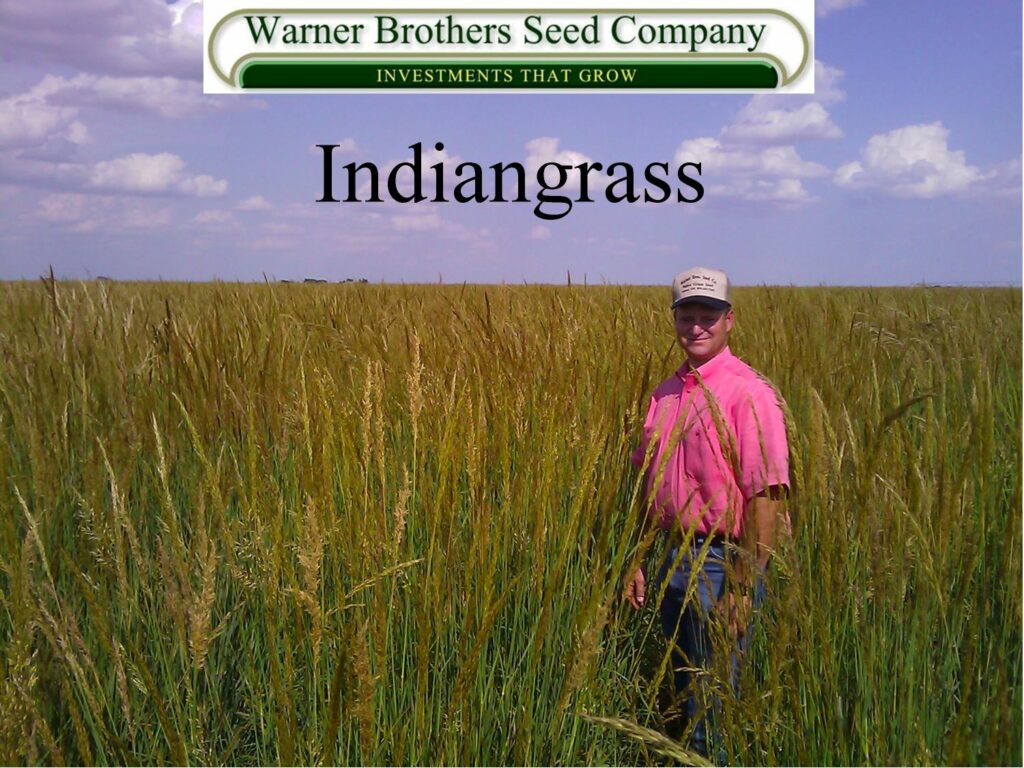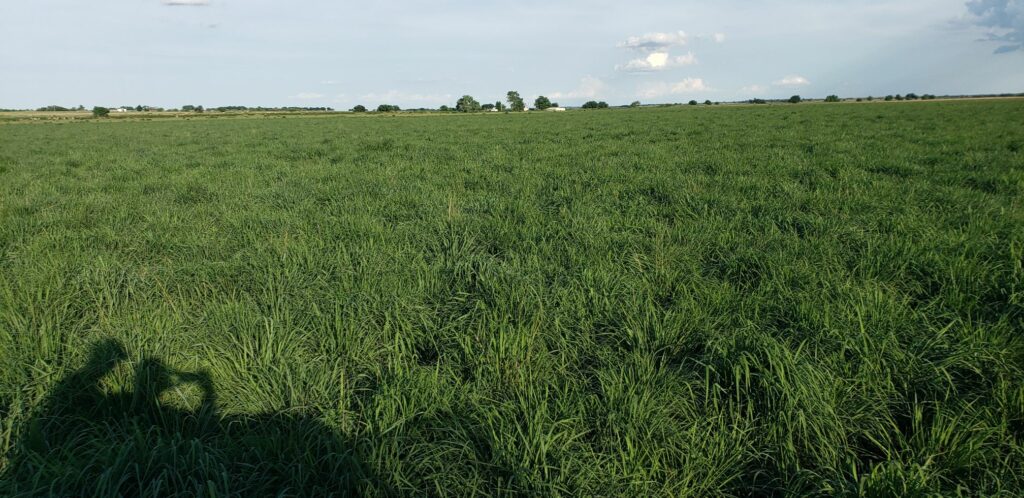Indiangrass

Indiangrass
(Sorghastrum nutans)
Indiangrass is a long-lived, warm-season, tall native bunchgrass. It’s adapted throughout the United States in most soil types from heavy clays to coarse sands. Indiangrass spreads by seed. Individual plants increase in size to large, dense bunches of underground rhizomes. Normally it is not found as a dominant species, but it is considered a valuable grass and should be used in reseeding on range sites. Indiangrass provides excellent forage for livestock and wildlife and good cover for deer and game birds. It is often used in pure stands for hay and grazing as well as in native pasture blends. Indiangrass seed is chaffy and should be planted between 1/4 to 1/2 in. deep.
Usually, Indiangrass is seeded with the species with which it occurs naturally. Best seedling stands have been obtained where plantings were made on a clean-tilled, firm, well-prepared seedbed.
General Characteristics
| Growth Type: | Bunch |
| Life Span: | Perennial |
| Growing Season: | Warm Season |
| Native / Introduced: | Native |
| Plant Height: | 3-6 feet |
| Cold Tolerance: | Good |
| Drought Tolerance: | Good |
| Salt Tolerance: | Fair |
| Soil Type: | Widely Adapted |
| Minimum Rainfall: | 16 inches |
| Planting Rate: | 4-6 pls# |
| Planting Date: | Dec. - June |
| Seed Type: | Chaffy |
| Uses: | Grazing, Wildlife Habitat, Erosion Control, Reclamation |


